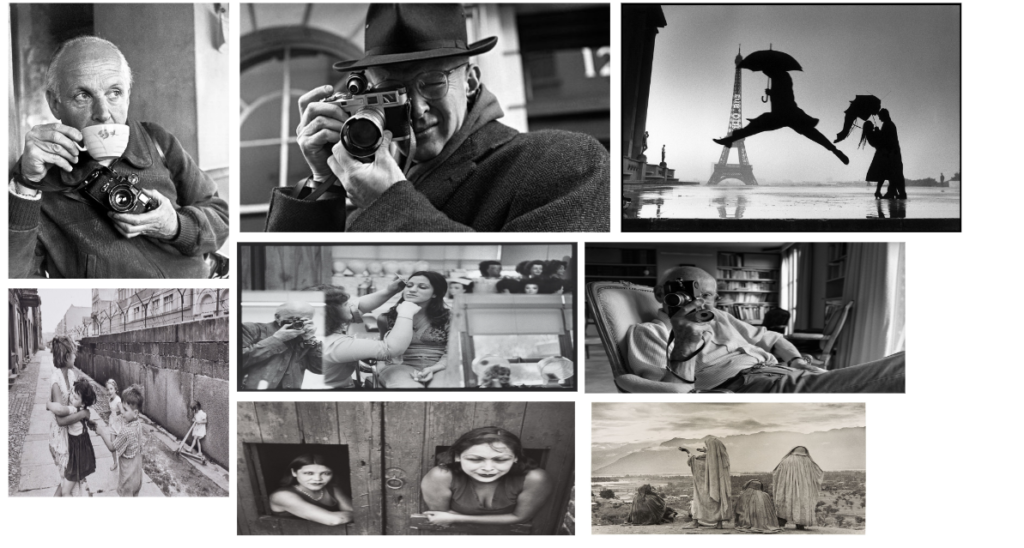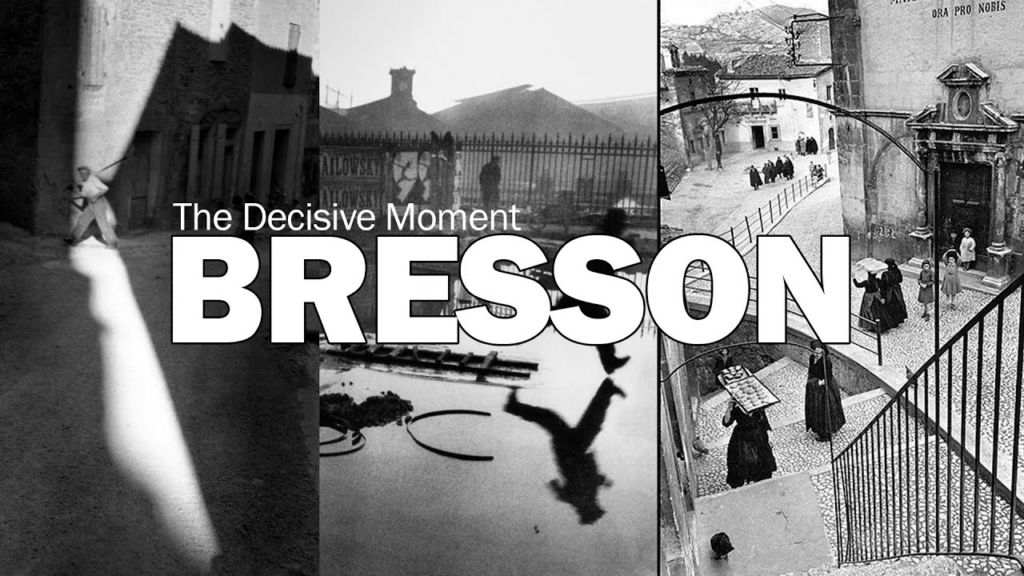
Henri Cartier-Bresson was a French photographer born in 1908 and died in 2004. He was known as the master of candid photography. He pioneered the genre of street photography, genre of photography that records everyday life in a public place, and viewed photography as capturing a decisive moment.
Cartier-Bresson was also one of the founding members of Magnum Photos in 1947, he worked with the responsibility of rapidly supplying the world with information, be it from the liberation of Paris to Ghandi’s funeral. Cartier-Bresson aided in the development of street photography, which is a genre that is still frequently used today. An international photographic cooperative owned by its photographer-members, with offices in New York City, Paris, London and Tokyo. In 1937 Cartier-Bresson produced a documentary film, his first, on medical aid in the Spanish Civil War. The date was also his first reportage photographs made for newspapers and magazines. His enthusiasm for filmmaking was further gratified from 1936 to 1939.
The Decisive moment


Henri Cartier-Bresson’s magnum opus, originally titled “Images à la Sauvette” and later known as “The Decisive Moment,” stands as an enduring masterpiece in the annals of photographic history. Published in 1952 by Simon and Schuster in New York in collaboration with Editions Verve, Paris, this iconic book is a curated collection of Cartier-Bresson’s finest work from his early years. Recognized as one of the pioneers of street photography, Cartier-Bresson displayed an unparalleled ability to artfully capture the poetry of everyday life through his lens. The coining of the term “The Decisive Moment” by Cartier-Bresson encapsulates a transformative concept in photography. Published in English under the same title, the term refers to a formal peak wherein all elements within the photographic frame harmoniously converge to create the perfect image. This concept became a guiding principle for photographers, emphasizing the significance of seizing spontaneous and fleeting moments that reveal the true essence of a scene or subject. Simon and Schuster’s collaboration with Editions Verve underscores the international acclaim and impact of Cartier-Bresson’s work. The book’s influence extends across generations of photographers, shaping the very fabric of the art form. Its English title, synonymous with achieving photographic perfection, highlights the meticulous approach Cartier-Bresson brought to his craft. What sets Cartier-Bresson apart is not only his technical prowess but also his humanist viewpoint. His photographs transcend mere documentation, capturing the profound beauty inherent in ordinary moments. The images within “The Decisive Moment” serve as visual poems, evoking a deep connection to the human experience. Through his lens, Cartier-Bresson invites viewers to appreciate the inherent artistry found in the ebb and flow of daily life. The book’s enduring legacy goes beyond its immediate impact; it has become an integral part of the world’s collective memory. Cartier-Bresson’s ability to pair technical mastery with a profound understanding of the human condition has left an indelible mark on the art of photography. His work continues to inspire and influence contemporary photographers, reminding them of the timeless power embedded in the decisive moment.
In conclusion, “The Decisive Moment” is not merely a collection of photographs; it is a manifesto that has shaped the philosophy of photography. Cartier-Bresson’s legacy lives on as a testament to the enduring significance of capturing the fleeting beauty inherent in our surroundings, a legacy that has earned its place as an A-star contribution to the rich tapestry of photographic history.
